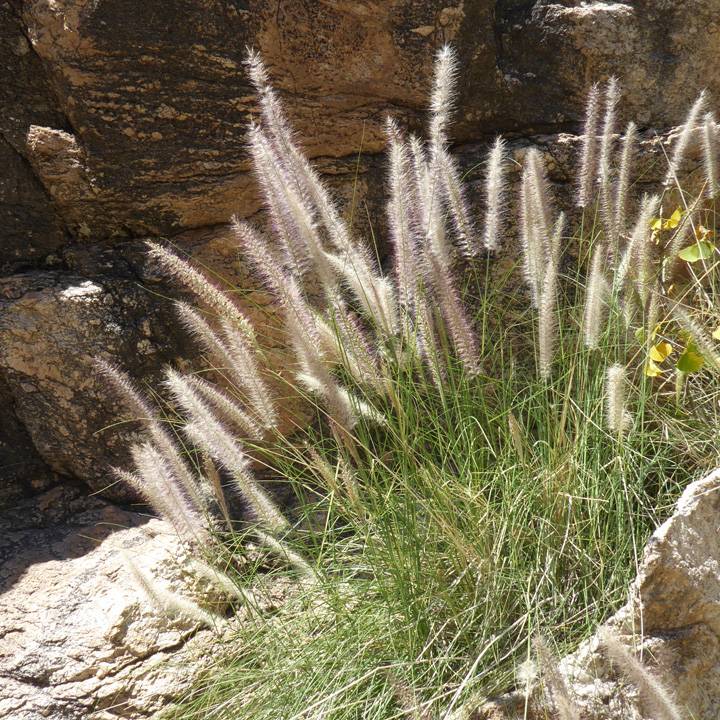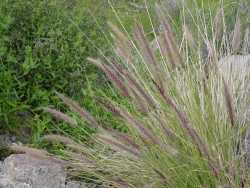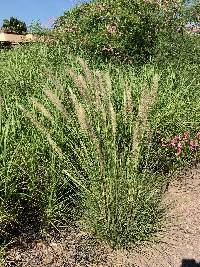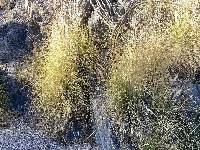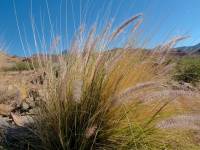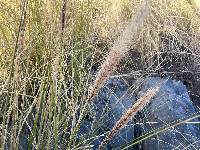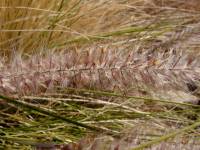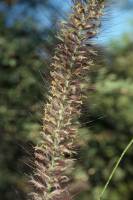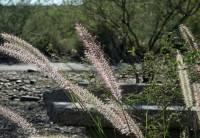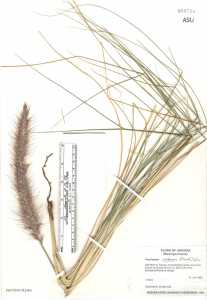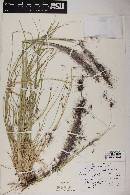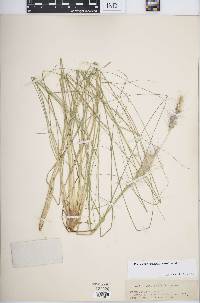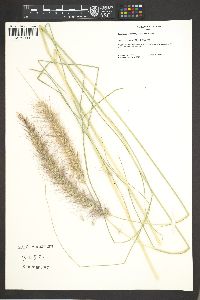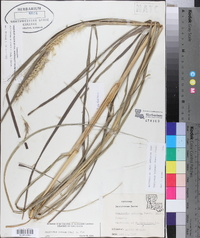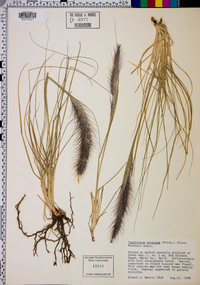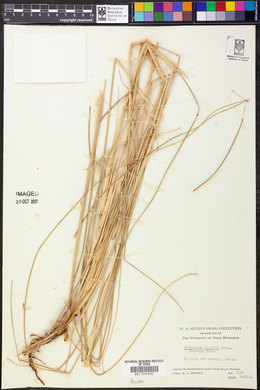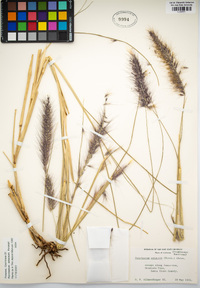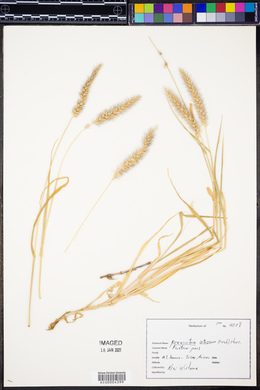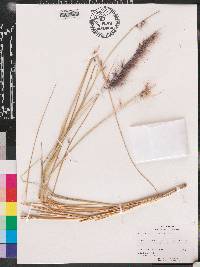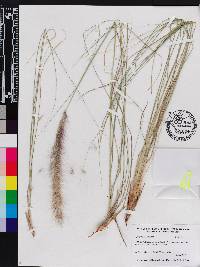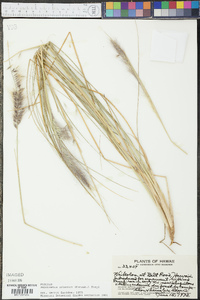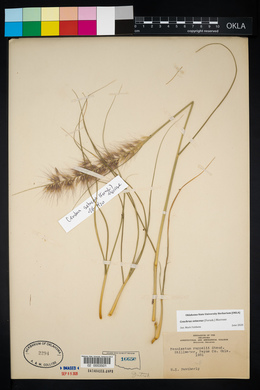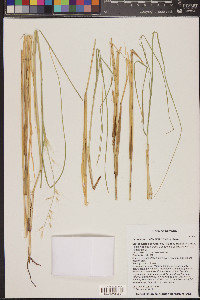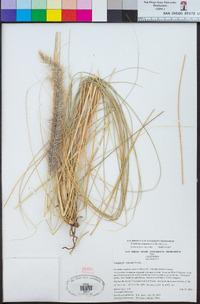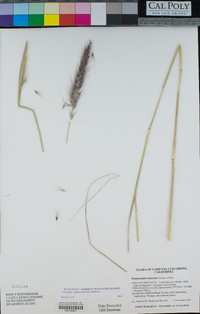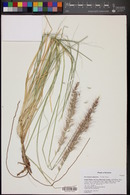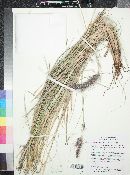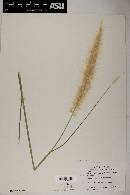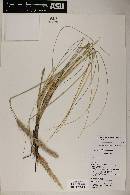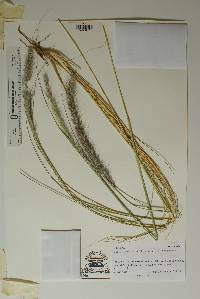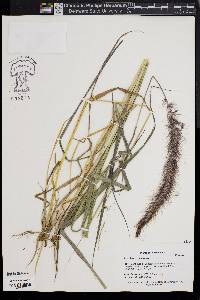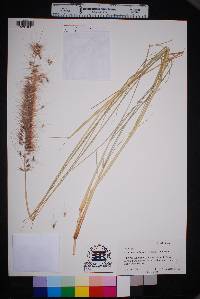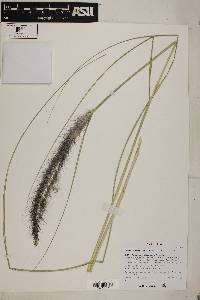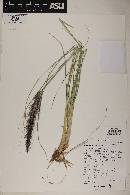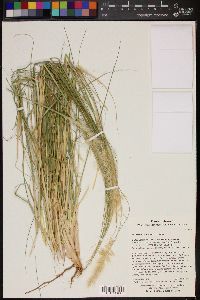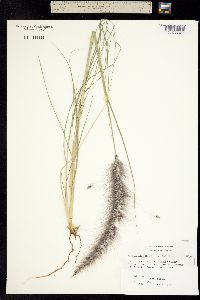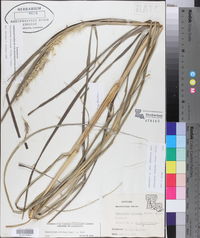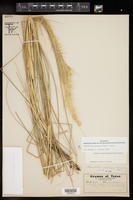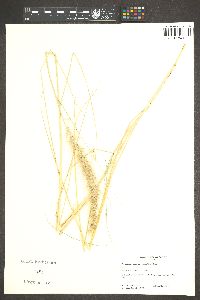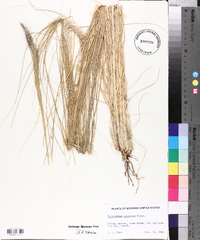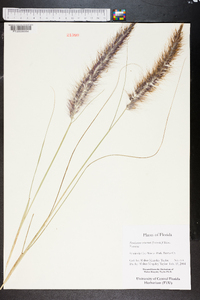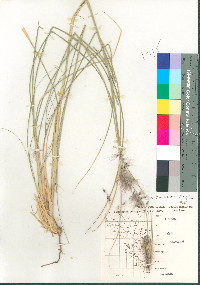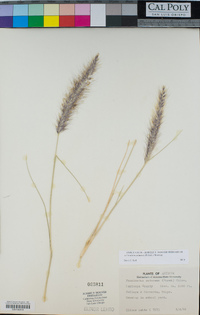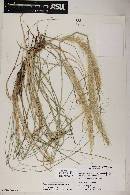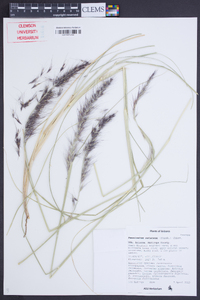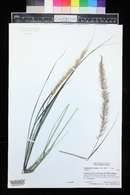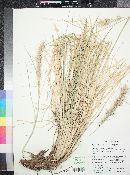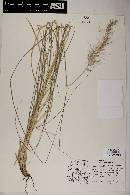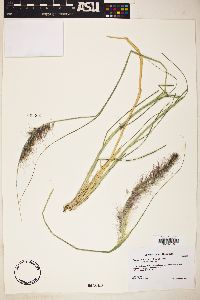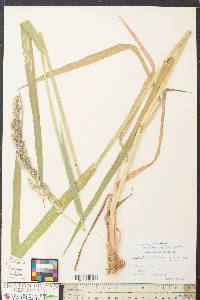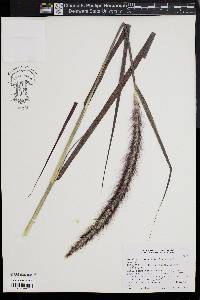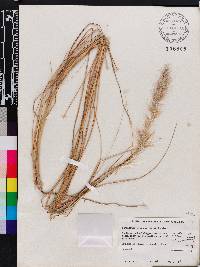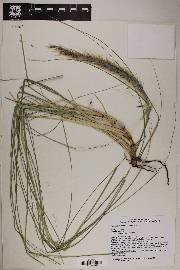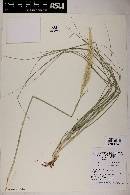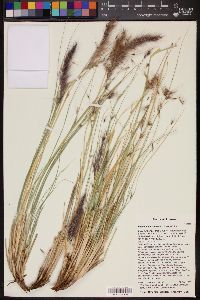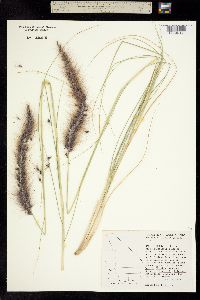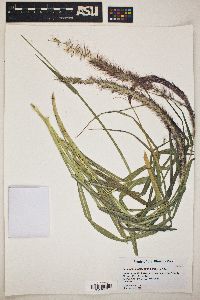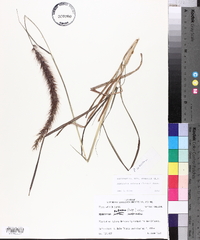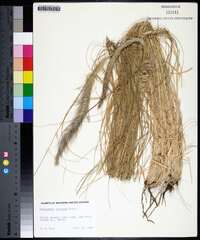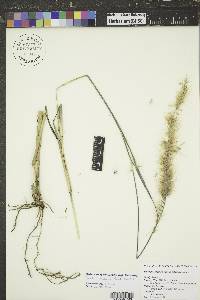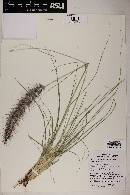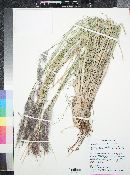
|
|
|
|
Family: Poaceae
Crimson Fountain Grass, more...crimson fountaingrass, fountain grass, fountaingrass, Tender Fountaingrass (es: plumitas)
[Cenchrus setaceus (Forssk.) Morrone, morePennisetum macrostachyon Fresen., Pennisetum ruppelii Steud., Pennisetum ruppellii , Phalaris setacea Forssk.] |
Plants perennial, or annual in temperate climates; cespitose. Culms 40-150 cm, erect, pubescent beneath the panicle; nodes glabrous. Leaves green, sometimes glaucous; sheaths glabrous, margins ciliate; ligules 0.5-1.1 mm; blades 20-65 cm long, 2-3.5 mm wide, convolute or folded, scabrous, midvein noticeably thickened. Panicles (6)8-32 cm long, 40-52 mm wide, erect or arching, pink to dark burgundy; rachises pubescent. Fascicles 8-10 per cm; fascicle axes 2.3-4.5 mm, with 1-4 spikelets; outer bristles 28-65, 0.9-19 mm; inner bristles 8-16, 8-27 mm, ciliate; primary bristles 26.5-34.3 mm, ciliate, noticeably longer than the other bristles. Spikelets 4.5-7 mm, sessile or pedicellate; pedicels to 0.1 mm; lower glumes absent or to 0.3 mm, veinless; upper glumes 1.2-3.6 mm, (0)1-veined; lower florets usually sterile, sometimes staminate; lower lemmas 4-6 mm, 3-veined, acuminate, midvein excurrent to 0.7 mm; lower paleas usually absent, if present, to 4.4 mm; anthers absent or 2.3-2.4 mm; upper lemmas 4.5-6.7 mm, attenuate, 5-veined, midvein excurrent to 0.7 mm, margins glabrous; anthers 2.1-2.7 mm. 2n = 27. Pennisetum setaceum is a desert grass native to the eastern Mediterranean region. It is a popular ornamental throughout the southern United States, but it is also an invasive weed. Dr. David Bogler, USDA NRCS PLANTS Database Perennials, Terrestrial, not aquatic, Stems nodes swollen or brittle, Stems erect or ascending, Stems terete, round in cross section, or polygonal, Stem nodes bearded or hairy, Stem internodes solid or spongy, Stem internodes hollow, Stems with inflorescence less than 1 m tall, Stems with inflorescence 1-2 m tall, Stems, culms, or scapes exceeding basal leaves, Leaves mostly cauline, Leaves conspicuously 2-ranked, distichous, Leaves sheathing at base, Leaf sheath mostly open, or loose, Leaf sheath smooth, glabrous, Leaf sheath hairy, hispid or prickly, Leaf sheath and blade differentiated, Leaf blades linear, Leaf blades 2-10 mm wide, Leaf blade margins folded, involute, or conduplicate, Leaf blade with prominently raised or widened midvein, Leaf blades mostly glabrous, Leaf blades more or less hairy, Ligule present, Ligule a f ringe of hairs, Inflorescence terminal, Inflorescence an open panicle, openly paniculate, branches spreading, Inflorescence a dense slender spike-like panicle or raceme, branches contracted, Inflorescence solitary, with 1 spike, fascicle, glomerule, head, or cluster per stem or culm, Inflorescence spike linear or cylindric, several times longer than wide, Inflorescence single raceme, fascicle or spike, Flowers bisexual, Spikelets pedicellate, Spikelets sessile or subsessile, Spikelets dorsally compressed or terete, Spikelet less than 3 mm wide, Spikelets with 1 fertile floret, Spikelets with 2 florets, Spikelets 1-4 in short bristly fascicles, Spikelets all alike and fertille, Spikelets bisexual, Spikelets disarticulating below the glumes, Spikelets falling with parts of disarticulating rachis or pedicel, Spikelets in bur-like clusters or fascicles with fused bracts, bristles or spines, Spikelets all subtended by bristles, Spikelet bristles 4-many, Inner spikelet bristles all round, Spikelet bracts or bristles disarticulating with spikelet, Rachilla or pedicel hairy, Rachilla or pedicel glabrous, Glumes present, empty bracts, Glumes 1 clearly present, the other greatly reduced or absent, Glumes distinctly unequal, Lemmas thin, chartaceous, hyaline, cartilaginous, or membranous, Lemma 5-7 nerved, Lemma glabrous, Lemma apex acute or acuminate, Lemma awnless, Lemma margins thin, lying flat, Lemma straight, Palea present, well developed, Palea membranous, hyaline, Palea about equal to lemma, Stamens 3, Styles 1, Styles 2-fid, deeply 2-branched, Stigmas 2, Fruit - caryopsis.
FNA 2003 Common Name: crimson fountaingrass Duration: Perennial Nativity: Non-Native Lifeform: Graminoid General: Cespitose perennial with erect stems 40-150 cm, pubescent beneath the panicle, with glabrous nodes. Vegetative: Green leaves, sometimes glaucous, glabrous sheaths with ciliate margins; ligules 0.5-1 mm, blades 20-65 cm long, 2-3.5 mm wide, convolute or folded, scabrous, with a noticeably thickened midvein. Inflorescence: Panicle 8-32 cm long, 40-52 mm wide, erect or arching, pink to dark burgundy with a pubescent rachises; spikelets in fascicles 8-10 per cm, axes 2-4.5 mm, with 1-4 spikelets; two sets of bristles, outer 28-65, 1-19 mm long, inner 8-16, 8-27 mm, ciliate; spikelets 4.5-7 mm, sessile or pedicellate, pedicels to 0.1 mm; lower glumes absent or to 0.3 mm, veinless, upper glumes 1-3.5 mm, 1-veined, lower florets usually sterile. Ecology: Found in a variety of habitats throughout the desert regions; flowers spring. Notes: Native to the Mediterranean this was a popular ornamental that has become a problem invasive weed. Easily distinguished by its red and almost plumose panicle. Ethnobotany: Unknown Etymology: Cenchrus is thought to be from Greek kenchros, millet, while setaceus means bristled. Synonyms: Pennisetum setaceum, Pennisetum ruppelii, Phalaris setacea Editor: SBuckley, 2010 |
|
|
|

